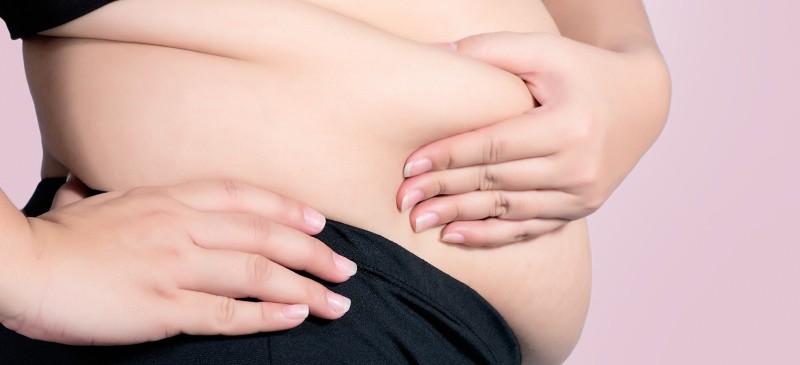This Dr. Axe content is medically reviewed or fact checked to ensure factually accurate information.
With strict editorial sourcing guidelines, we only link to academic research institutions, reputable media sites and, when research is available, medically peer-reviewed studies. Note that the numbers in parentheses (1, 2, etc.) are clickable links to these studies.
The information in our articles is NOT intended to replace a one-on-one relationship with a qualified health care professional and is not intended as medical advice.
This article is based on scientific evidence, written by experts and fact checked by our trained editorial staff. Note that the numbers in parentheses (1, 2, etc.) are clickable links to medically peer-reviewed studies.
Our team includes licensed nutritionists and dietitians, certified health education specialists, as well as certified strength and conditioning specialists, personal trainers and corrective exercise specialists. Our team aims to be not only thorough with its research, but also objective and unbiased.
The information in our articles is NOT intended to replace a one-on-one relationship with a qualified health care professional and is not intended as medical advice.
Can Uterine Fibroids Cause Unexplained Weight Gain?
July 19, 2019

Uterine fibroids can vary in size from small, undetectable nodules to massive tumors that cause the uterus to expand to the size of a four- or five-month pregnancy. (1)
There is certainly a causal relationship between fibroid growth and weight gain, but how big do fibroids have to be before you start to see the weight, what causes them to grow and what can you do about it?
What Are Fibroids?
Uterine fibroids (also called ‘leiomyomas’) are non-cancerous masses that develop in the muscular tissue of the uterus. Surprisingly, fibroids are more common than not, especially as women progress through the latter half of their reproductive years.
One study in the U.S. observed that 60 percent of African-American women had developed fibroids by age 35, with that figure increasing to 80 percent by age 50. Similarly, 40 percent of Caucasian women had developed fibroids by age 35, and almost 70 percent by age 50. (2)
As common as they are, fibroids go unnoticed by the majority of women that have them. In another commonly cited population study, about 7 percent of women reported that they lived with symptomatic fibroids. (3)
These findings suggest that fibroids remain very small and therefore inconsequential for the majority of women. In less fortunate women, fibroids grow to sizes that cause debilitating symptoms, the most common of which are heavy menstrual bleeding and pelvic pain.
Fibroids and Weight Gain
Not surprisingly, as fibroids grow to larger sizes they can cause a visible expansion of the abdominal and/or pelvic region, causing the lower stomach to protrude. (4) Some women refer to this as a tummy or a “pooch” that they can’t get rid of.
Because fibroids cause the uterus to expand, medical professionals tend to talk about fibroid size in the same way that they would describe the size of a pregnant uterus. A healthy, non-pregnant uterus is roughly the size of a small pear and sits deep inside the pelvis.
At 12-weeks pregnant, the uterus can be felt at the pelvic bone and is about the size of a small grapefruit. This is equivalent to the size of the uterus when affected by a 4- to 6-inch fibroid, and it’s not impossible for a fibroid-affected uterus to grow even larger.
All of that said, fibroids this large are by no means the norm. One study on fibroid treatment carefully examined the size of the fibroids that were treated in 120 symptomatic patients prior to treating them. Only about 25 percent of patients’ fibroids exceeded 4 inches in diameter.
If we assume that about 25 percent of women with symptomatic fibroids undergo treatment for them, this means that fibroids this large only occur in about 5 percent to 10 percent of symptomatic fibroid cases.
Fibroids and Bloating
In addition to tumor growth, fibroids can cause other physical alterations that can look and feel like weight gain. Because of its position in the pelvis, the expanding uterus may obstruct neighboring organs such as the urinary system or the gastrointestinal system.
In some cases, the enlarged uterus may press on the bladder or the ureters, causing the kidneys to swell because they are unable to drain urine. Similarly, external pressure on the gastrointestinal system may also cause bloating, congestion, or sensations of heaviness. (5)
What Causes Fibroids to Grow
The exact science behind why fibroids only affect certain women, and why they grow to a pathological size in only a portion of them isn’t entirely clear. An over-abundance of sex hormones, genetics, vitamin D deficiency, exposure to toxins, diet, and a number of complex biological factors have all been linked to faster fibroid growth. (6)
Estrogen and progesterone are two sex hormones that stimulate the development of the uterine lining during each menstrual cycle. It has been observed that fibroids contain more estrogen and progesterone receptors than normal uterine muscles do, and it’s well accepted that these hormones stimulate fibroid growth.
Fibroids do tend to shrink after menopause when hormone levels decline. By a similar mechanism, pregnancy appears to protect women against fibroids and fibroid growth. (7)
Other Fibroid Symptoms
All of the evidence so far is sufficient to conclude that fibroids can indeed cause unexplained weight gain, but it’s unlikely that this is the only symptom a woman experiences when her fibroids get large enough to cause noticeable body changes. If you’re suspicious that fibroids may be causing you to gain weight, you may have other telling symptoms of fibroids as well.
Heavy Menstrual Bleeding: This is the most common symptom of uterine fibroids. In fact, many women with fibroids report bleeding abnormalities and no other symptoms. Women with fibroids may live with heavy periods, prolonged periods, bleeding between periods, and/or unpredictable or irregular periods.
Bulk Symptoms: If you have fibroids large enough to cause visible weight gain, you may also be dealing with ‘bulk’ symptoms. These are symptoms caused by the enlarged uterus pressing on nearby organs causing constipation, difficulty urinating and other bathroom challenges.
Pain: A number of pain patterns can present with fibroids. You may experience episodes of extreme pain in the pelvis, chronic lower back pain and/or leg pain in rare cases. Pain during intercourse is also commonly reported by women with fibroids.
Fibroid Diagnosis
Unexplained weight gain may be cause enough to see a doctor, but if you also have other fibroid symptoms, you may want to consider seeing a fibroid specialist. Getting checked out for a serious medical condition can be a daunting endeavor, but women are usually relieved to find out that fibroids can be diagnosed with a simple ultrasound exam, similar to what you would receive if you were pregnant.
Unexplained weight gain and typical fibroid symptoms may indicate other uterine masses that you and your doctor should be on the lookout for. These can include adenomyosis, ectopic pregnancy, endometrial polyp or uterine cancer, among others. (8)
Lose the Fibroid Weight
If you happen to be diagnosed with uterine fibroids, treatments are available that can shrink your fibroids or remove them altogether. Interventional approaches are certainly effective at returning the uterus to its normal size and have been the standard of care for symptomatic fibroids for multiple decades.
And more recently, certain over-the-counter dietary supplements have been looked at as a way to keep fibroids in check.
Dietary Supplements: while not formally recommended in medical guidelines due to the limited evidence supporting them, green tea extract and vitamin D supplements have been assessed in small clinical studies, and preliminary evidence suggests that long-term use of these supplements may shrink or halt the growth of fibroids. (9, 10)
Uterine Fibroid Embolization (UFE): This is a minimally invasive medical procedure in which micro-sized beads are injected into the fibroid. These beads cut off the fibroid’s blood supply, causing them to starve and shrink. (11)
Myomectomy: This is a major surgical procedure in which fibroids are cut from the uterus while keeping the uterus intact. Myomectomy may not be ideal when there are multiple fibroids. (12)
Hysterectomy: This is a major surgical procedure in which the uterus is removed. Despite the availability of less invasive treatments that keep the uterus intact, like UFE and myomectomy, hysterectomy is still widely used to treat uterine fibroids. (13)
You certainly have options when it comes to your fibroids. It’s best to discuss them with your healthcare provider so that you fully understand the risks and benefits of each treatment.
Dr. Michael Lalezarian is a practicing interventional radiologist with the Fibroid Specialists of University Vascular in Los Angeles, CA. In addition to patient care, Dr. Lalezarian teaches and supervises medical students, residents, and fellows as a full time teaching Professor in the Department of Radiology at UCLA. He is regarded as an expert in uterine fibroid embolization. You can view Dr. Lalezarian’s full bio here.









